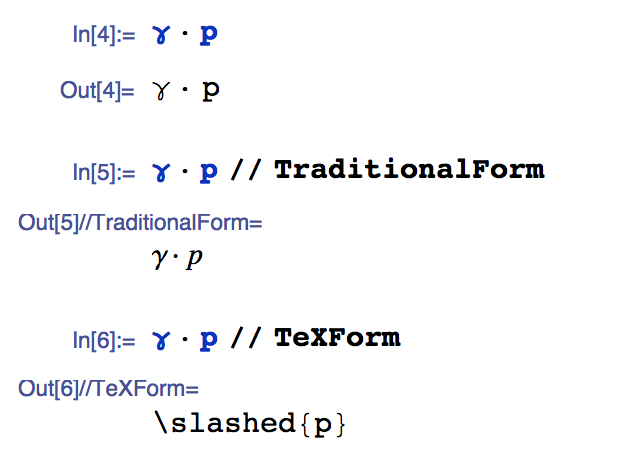According to the documentation, TeXForm uses the TraditionalForm formatting to generate the TeX code.
However, for some cases, this is not ideal. For example, it would be better to display the Feynman slash $\sum_\mu \gamma_\mu p^\mu$ as
CenterDot[γ, p]$\equiv \gamma\cdot p$ in TraditionalForm in the Mathematica front end,
but as \slashed{p}$\equiv p\!\!/\,\,$ in TeXForm (using the slashed package).
How do I tell TeXForm that each time CenterDot[γ, p_] is encountered in an expression, it should be formatted \slashed{p}?
I'm looking for a back-end solution, so that TeXForm on an input or output would automatically give the correct code. Solutions requiring more than the minimal TeXForm to generate $\TeX$ code will not be accepted.

